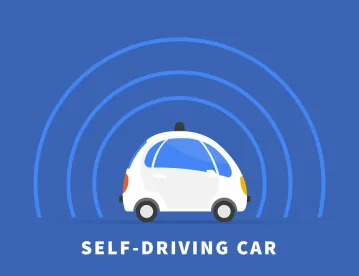Supporters of autonomous vehicles, or self-driving cars, often claim they will make our roads safer by removing human error from the driving equation. However, critics of this new technology argue that the complexity of these machines will increase the potential for product defects to occur, which may mitigate some of the safety benefits derived from taking the potential for human error out of the act of driving a vehicle. One way to conceptualize the product liability risks that are unique to self-driving vehicles as opposed to the traditional human-operated vehicle is to think about the complexity involved in designing and manufacturing an autonomous vehicle.
In the case of the traditional automobile that is operated the old-fashioned way, by a driver, the manufacturers face the risk that the vehicle could be involved in an accident, and the claim could be made that a defective component of the vehicle failed to prevent the accident or caused the accident in the first place. Naturally, the first issue to be investigated in an accident involving a vehicle driven by a human is what was the driver doing, or not doing, just before the accident, and did the driver’s actions or inaction cause the accident?
 In investigating accidents involving autonomous vehicles that issue does not come into question. Since the vehicle will be operated by a computer, not a human, accident reconstruction experts will focus only on the product itself, and the actions or inaction of the occupants of the vehicle will be irrelevant in determining the cause of the accident. This will entail accident reconstruction experts examining various technology malfunctions, such as the software and hardware that are used to control the self-driving car. This will require the accident reconstruction experts to have expertise beyond the fields of mechanical engineering and biomechanics, and will require additional expertise in the fields of computer science, data analytics and programming.
In investigating accidents involving autonomous vehicles that issue does not come into question. Since the vehicle will be operated by a computer, not a human, accident reconstruction experts will focus only on the product itself, and the actions or inaction of the occupants of the vehicle will be irrelevant in determining the cause of the accident. This will entail accident reconstruction experts examining various technology malfunctions, such as the software and hardware that are used to control the self-driving car. This will require the accident reconstruction experts to have expertise beyond the fields of mechanical engineering and biomechanics, and will require additional expertise in the fields of computer science, data analytics and programming.
Notably, with the rise in the popularity and widespread use of ride-sharing apps, as opposed to the traditional taxi cab, it is expected the self-driving technology will be combined with these apps to increase the efficiency and profitability of this service. The operators of these ride-sharing apps predict that within the next five years “robots” will drive the majority of their cars. With that being said, we will likely see an increase in product liability claims as this technology becomes more commonplace. Technology, although beneficial to our lives, poses significant risks and potential for error based on programming error or malfunctioning components. It will be interesting to see how litigation unfolds in this era of ridesharing and self-driving cars.
It is projected that by 2021, all of the major car manufacturers will sell some version of a self-driving car. With the increased production of these self-driving cars nationwide, it will be crucial to examine and assess safety protocols and implications of these new products with more depth. For instance, in a study conducted by the World Health Organization (WHO), an evaluation and assessment revealed that approximately 1.25 million deaths were the result of traffic accidents. Significantly, traffic accidents have been on the rise; in 2016 the United States documented approximately 37,461 deaths from auto accidents, which was an increase from the 35,485 deaths documented in 2015. In contrast, a study by the Insurance Institute for Highway Safety (IIHS) assessed that the advancement of both technology and modernized design techniques have led to a reduction in automobile-related deaths. The reduction in deaths assessed by the IIHS was primarily focused on the number of deaths when individuals were driving or riding in newer vehicle models as opposed to older model vehicles.
Moreover, recent studies have indicated that when assessing recent car models versus later manufactured models, the rates of death while operating a motor vehicle have significantly declined over the span of three years. It is important to consider the benefits to the public overall in conjunction with the implications of self-driving vehicles, as these factors go hand-in-hand. For instance, individuals who were having difficulty with mobility will now be able to move around more efficiently. Individuals who will be greatly impacted are those unable to drive due to physical or mental impairments, as well as the elderly who are no longer able to drive. The self-driving cars not only can assist with efficiency and convenience of transportation but also have implemented electronic stability controls that add other layers of protection on wet or slippery roads.
The first self-driving car lawsuit filed in California, Nilsson v. General Motors LLC, arose from an accident where a motorcycle collided with a self-driving car on December 7, 2017, in San Francisco, California. The cause of action asserted in this self-driving car collision was negligence, based on the self-driving car allegedly veering into Mr. Nilsson’s lane and causing injuries to his neck and shoulder requiring an extended period of treatment.
Managing the expectations of customers interested in purchasing a self-driving car is key and vital to the success of the self-driving car industry, as well as the mitigation and reduction of potential lawsuits. For instance, the customer must be aware that a self-driving car still poses a risk to safety and human life. Driving in a self-driving car poses dangers on the road similar to driving a car in the traditional sense. A self-driving car has the potential to malfunction, as is the case with any product. No technology has a 100% fail-safe capability, and with the newness of self-driving cars, it is possible that all of the technology’s kinks and flaws have not yet been mitigated or predicted. With that being said, the self-driving cars while convenient do still have limitations, and it is important that customers do not put 100% of their trust into them.
When managing expectations, companies that market and sell self-driving cars have the responsibility to be clear with the customers and third parties with which they enter into contracts. It is important when entering into contracts pertaining to the use and sale of self-driving cars that the contract terms are clear and explicit as to what the company is going to deliver based on that particular self-driving car being sold or marketed. Additionally, it is important for the company manufacturing and selling the self-driving car to disclose to its customers or buyers the risks inherent in the use of a self-driving car. It is crucial to decide on the best method of communicating these risks and expectations to customers in order to ensure they receive adequate information and are able to make an informed decision prior to their purchase or use of a self-driving car.
If you are able to manage expectations surrounding the use and purchase of a self-driving car, you could greatly reduce the need for future litigation and expense surrounding these vehicles. Moreover, if companies are unable to adequately manage expectations and disclose the potential risks and limitations of these self-driving cars, there is a potential for a flood of litigation in our courthouses. The legal issues with self-driving cars could present some future challenges, as these types of lawsuits do require some level of expertise and knowledge in the areas of programming, statistics, algorithms, and analytics.



 />i
/>i

